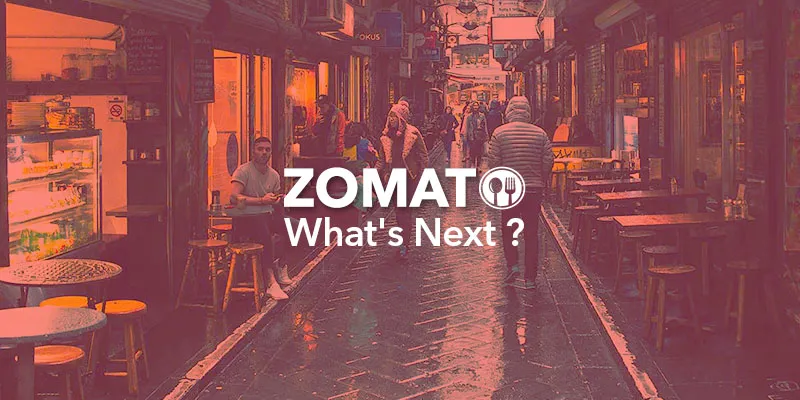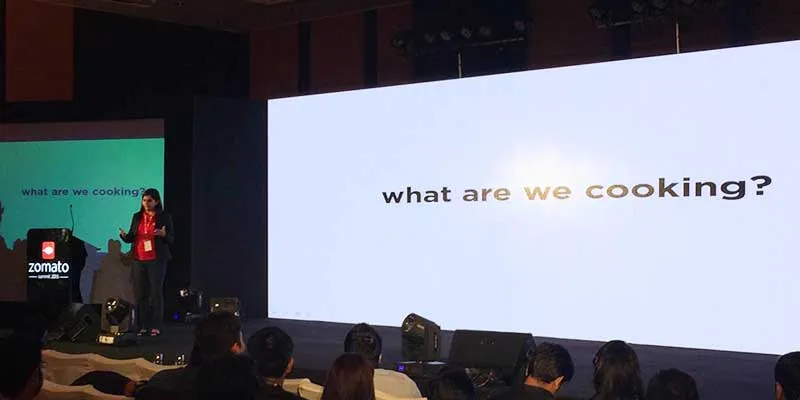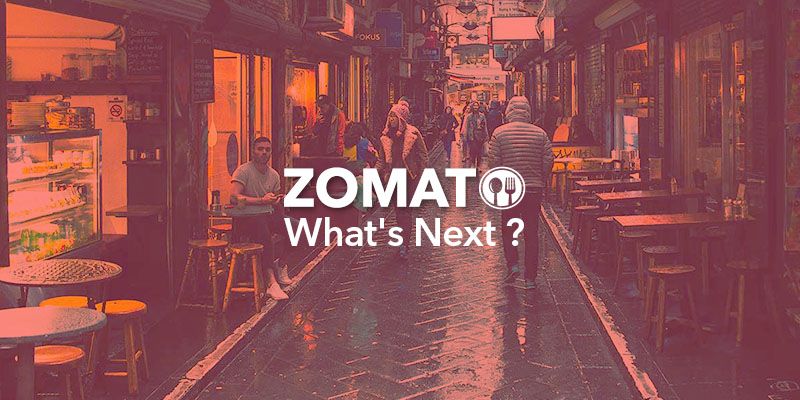What do the next few months have in store for Zomato
After launching its last-mile logistics vertical, restaurant search and discovery platform Zomato is now eyeing different aspects of the online food and restaurant business. Surobhi Das, COO, Zomato at the Zomato 2015 Summit held recently in Bengaluru, said "We've launched and are looking to launch different product lines across different geographies to ensure that restaurants have one platform for interaction."
Close to 20,000 restaurants have downloaded the Zomato business app from the beginning of this year, and within a month the team claims to have had over 10,000 active ads. Surobhi also said the traffic to the website from January has increased from 35 million to 90 million. She added that the team has worked towards changing Zomato from just a search and discovery app to a product platform that can be integrated across different verticals of the business.

Launching into different markets
Zomato has two main approaches: one is building its presence from scratch, which it has done in a few countries, and the other is going the acquisition route. It acquired MenuMania in New Zealand, Lunchtime in Czech Republich, Obedovat in Slovakia, Gastronauci in Poland, Cibando in Italy and UrbanSpoon, mainly for the US and Australia. As a new brand in a country, the growth is pretty much organic but when growing via acquisitions, more complexities are involved.
In markets where there was no dominant player, Zomato seems to be doing well. A recent blog post by Denis Bravenec points out some of the things Zomato seems to be doing right:
- Penetrating quickly: Zomato has entered 23 cities within Czech Replublic, whereas global competitor Yelp is only present in Prague (here’s what you need to know about Yelp)
- Adapting content to local markets: Zomato has always been able to catch attention with its content, be it text or graphics. It seems to have done a good job with localising content as well.
Enhancing the existing experience
The ticket to entry for Zomato is its search and discovery platform. To ensure that users have a seamless experience, Surobhi said the app has some more enhanced features. While initially the Zomato team would pick and choose users' collections, the app is now becoming more social.
Followers can now see different places and types of cuisine an individual is visiting and tasting, and can pick and choose based on the same. The app will also be opening its content collection to the users. This means that there will be a set of users in every city across the globe who would be able to contribute to the Zomato restaurant data and content on a daily basis.
Controlling spam
While this definitely contributes to more eyeballs and information for Zomato in terms of data on restaurants, it has brought on a heated argument from restaurant owners on the fairness of the users’ evaluations. One of the biggest debates at the summit surrounded reviews.
Restaurant owners believe that many reviews are possibly seeded by competition or by users through unsolicited means. While the team is looking to deal with the issue, it is yet to reach a foolproof solution. A solution the team is intending to introduce is a name-and-shame feature.
"If a restaurant merchant is discovered using unsolicited means to gain positive reviews and push out negative reviews to its competition, our platform will put up a yellow banner on their page that runs a disclaimer stating the same. This banner will be up for 30 days," said Surobhi. When asked whether similar banners will be imposed on users doing the same thing, she said it would be more complex when it's an individual as opposed to an establishment.

Creating a suite of products for seamless usage
To ensure that both users and business partners have seamless interaction, Zomato will be launching a product repertoire that caters to different aspects of this interaction.
Zomato Order
Launched two months ago, Zomato Order is currently open in Dubai and India. For this feature, the team is looking at delivery-heavy markets like the Middle East and South East Asia. To ensure that the number of rejected orders reduces, restaurant owners can now switch on or switch off any items on the menu. On the user front, the consumer won't even be able to see that particular dish up for order.
When it comes to online food ordering, Zomato is late in the game. It decided to enter the space only in February and launched a separate app in May 2015. To spruce up its delivery process, online restaurant directory and food ordering, Zomato has made strategic investments in Gurgaon-based Pickingo and Mumbai-based Grab, both hyperlocal delivery players. This is to enable last-mile delivery for restaurants, including dine-in-only restaurants that don’t otherwise deliver.
Zomato has also partnered with digital-commerce-focussed logistics venture Delhivery. It is worth noting that with this partnership, Delhivery is also ushering in hyperlocal delivery services.
Mumbai-based TinyOwl has raised over USD 20 million, Bengaluru-based Swiggy is also heavily funded and there are many other players in the game. Even globally, the market is filled with activity in this space. US has been the trendsetter, with companies like Sprig and Munchery, while Germany has been Europe’s big battleground for food delivery.
In the near future, we may see more strategic investments or acquisitions of hyperlocal delivery networks in different cities by Zomato. Building a nationwide delivery network is a time-consuming task and instead the company will eye more such partnerships and investments.
Zomato Book
With its recently acquired US-based NexTable, Zomato Book was launched in Australia, India and UAE. The team is trying this out with close to 50 merchants in these markets. This product will help manage tables and reservations through the app and website, through integration with API, CRM, reports and analytics. Zomato will make available the product soon to all its customers.
Zomato Cashless
Launched in Dubai, Zomato Cashless helps users pay for their meal without having to wait for the bill. You just have to walk into the restaurant and pay via Cashless. A tab is opened in your name which keeps track of your order values and amounts from the account. However, the India launch will take more time than anticipated due to the two-step verification process.
Zomato Base
Zomato recently acquired MapleGraph to launch Zomato Base. It is an Android-based POS system that uses custom hardware for a reliable and customisable product experience. It offers restaurants features such as menu and inventory management, and has a built-in payment solution to accept debit and credit card payments. With this acquisition, Zomato moves a step closer to providing crucial business-focussed solutions for restaurants, which in turn will help the company offer highly differentiated services to the end consumer.
The detailed list of features in Zomato Base include: menu management, inventory management, recipe management, customer relationship management, data analytics, electronic receipts, offline transaction support, payment gateway integration and more.
Zomato Whitelabel Apps
In order to help restaurant owners create apps, Zomato has launched the Zomato Whitelabel Apps, which instantly creates a restaurant app. The idea, Surobhi said, was to help users pick a particular restaurant in Zomato easily without waiting for the search to show up. This gives the specific restaurant’s integration with other Zomato products, engages with its consumers, sends push notifications, tracks app installs and usage. "We're giving Zomato's tech to help you create this app," she added.
Yourstory take
With the several aggressive steps Zomato is taking in terms of acquisitions and product development, it seems that the team is looking to build a strong base. It might also be that Zomato intends to be the sole go-to platform for restaurant and food business. How far it will go, is a question only time will answer.











